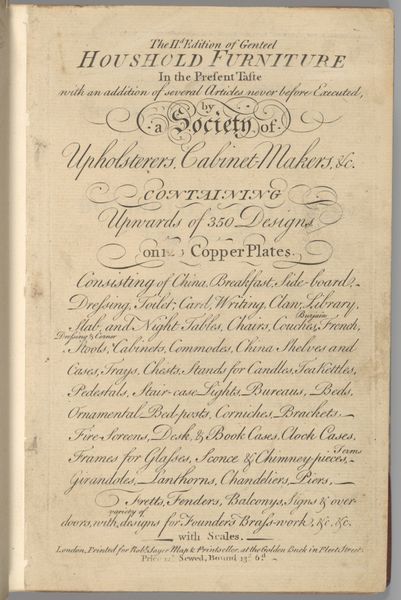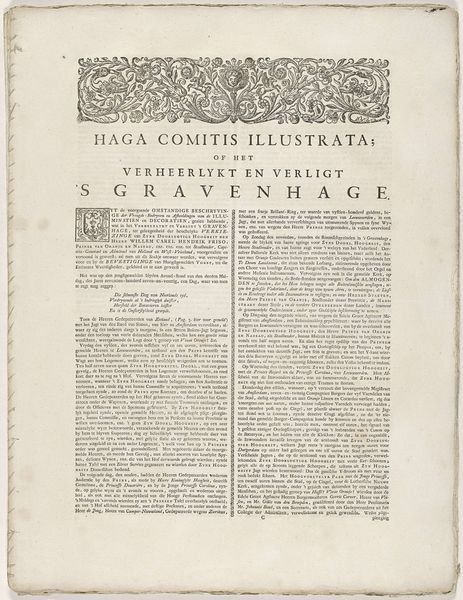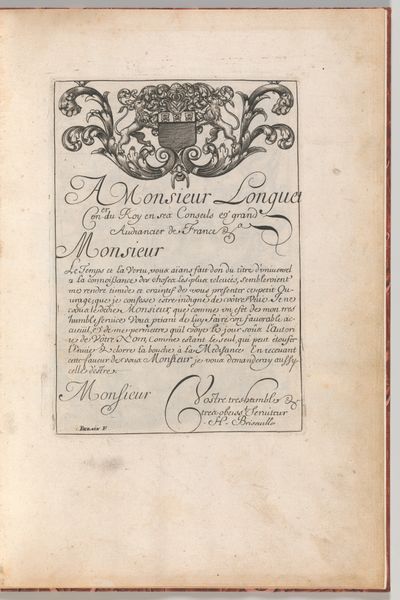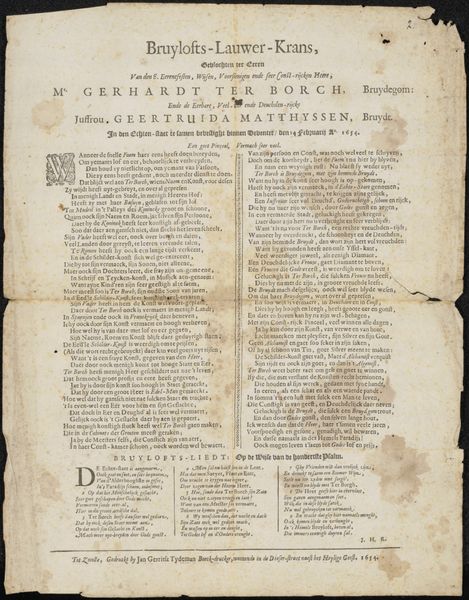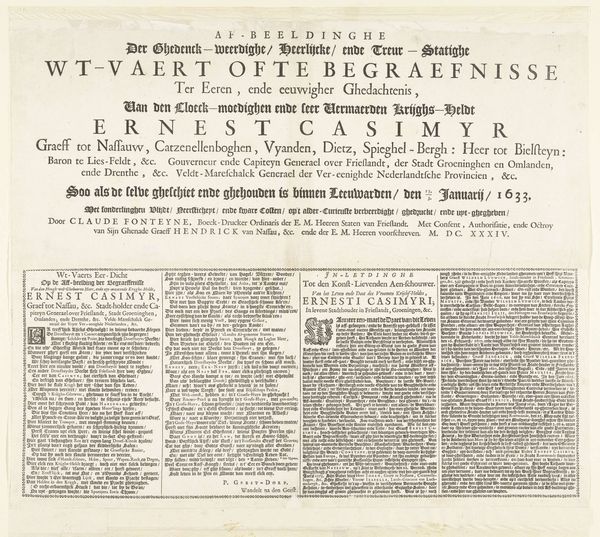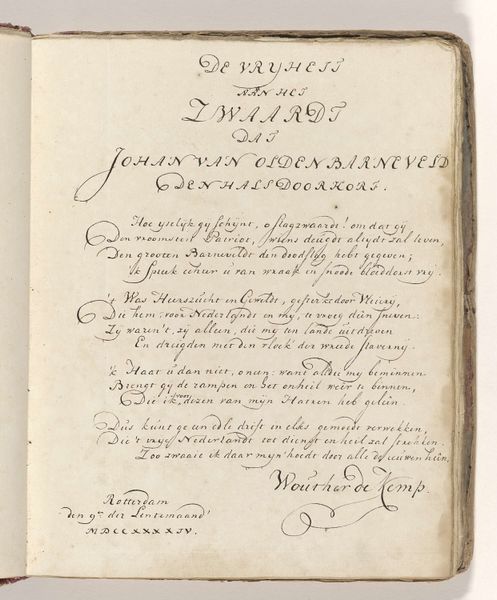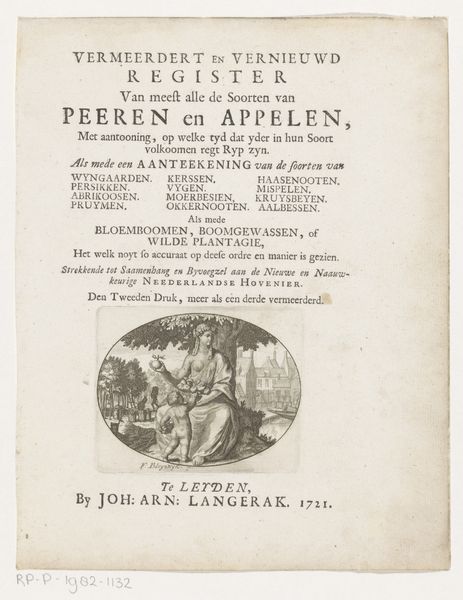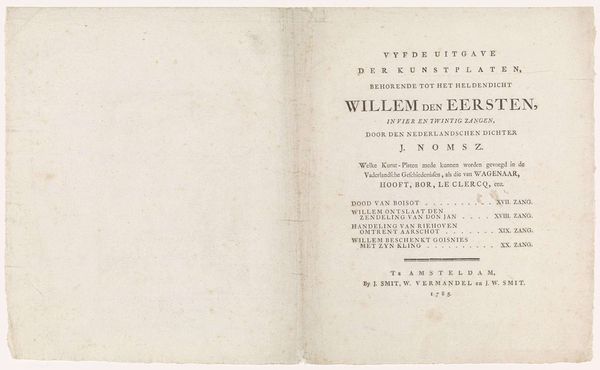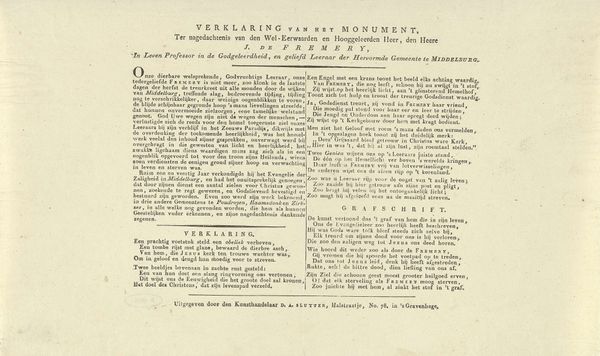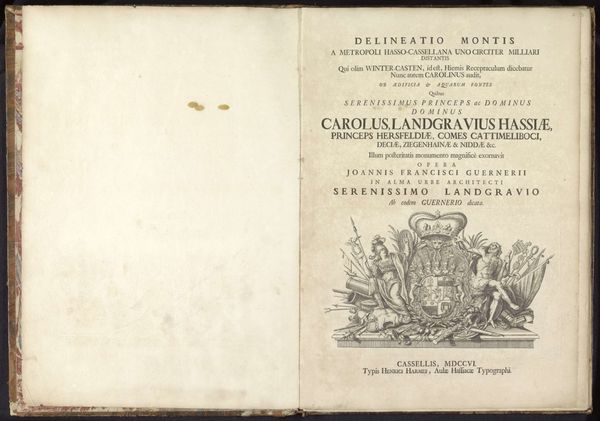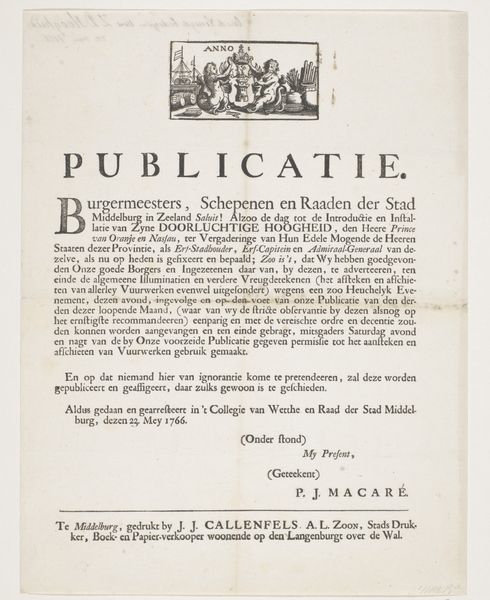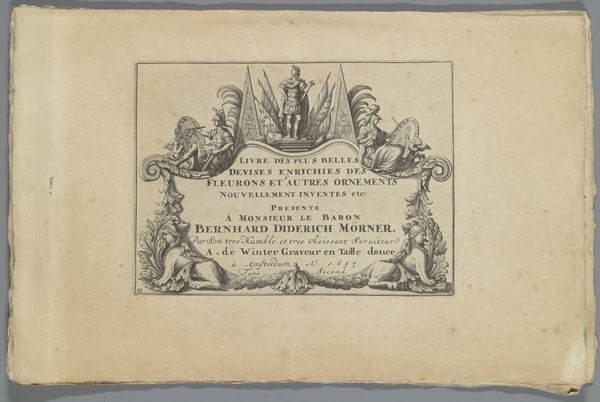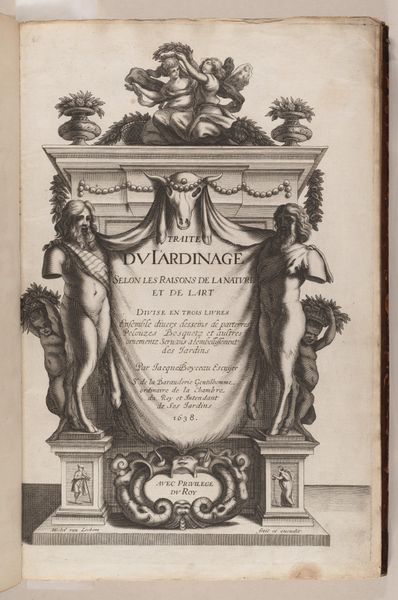
Vitruvius Britannicus or The British Architect, The Plans, Elevations, and Sections of the Regular Buildings, both Publick and Private, in Great Britain,... 1715
0:00
0:00
drawing, print, architecture
#
drawing
# print
#
architecture
Dimensions: 20 1/16 × 14 9/16 × 1 3/8 in. (51 × 37 × 3.5 cm)
Copyright: Public Domain
Curator: What strikes me most about this title page from Colen Campbell's *Vitruvius Britannicus*, created in 1715, is how it engages with the labor and production of architectural representation. Editor: I agree; I notice this drawing is part of a larger print, and its focus on plans and elevations makes me think about architectural craftsmanship. What do you see in it? Curator: Look at the phrasing: "Engraven by the best Hands," suggesting the importance placed on skilled labor. This was a project intended to elevate British architecture but also the crafts involved in its documentation. Consider how it straddles "Buildings themselves" versus "Original Designs of the Architects." Is it celebrating conception or execution—or, crucially, both? What does that imply about the intended audience and their own engagement with labor? Editor: That's fascinating. So, it's not just about showcasing the buildings themselves, but also about valuing the process of representing them. Curator: Exactly! And how this process itself relied on skilled labor, from drawing to engraving. Do you think this detailed approach affected how architecture was perceived and consumed at the time? Editor: Definitely! It seems that making architecture visible in print increased awareness. And now I am considering the access to architectural trends and techniques through such publications. I hadn't thought of prints this way before, I was unaware of how focused and integral the means of production are in the understanding of this and possibly all art from that era. Curator: Indeed! Paying attention to the "how" and "why" things are made always reveals so much more about their cultural significance and lasting influence.
Comments
No comments
Be the first to comment and join the conversation on the ultimate creative platform.
